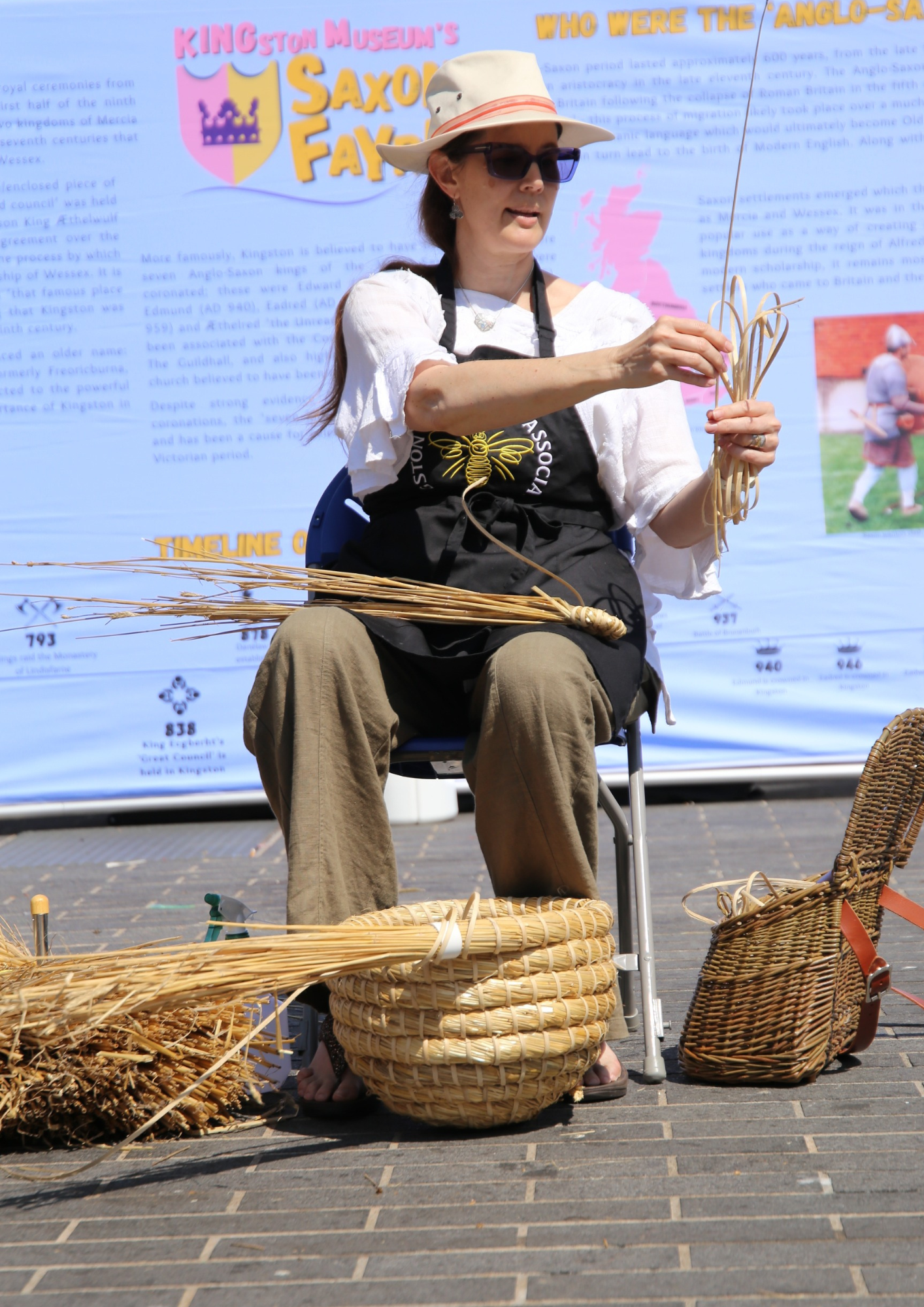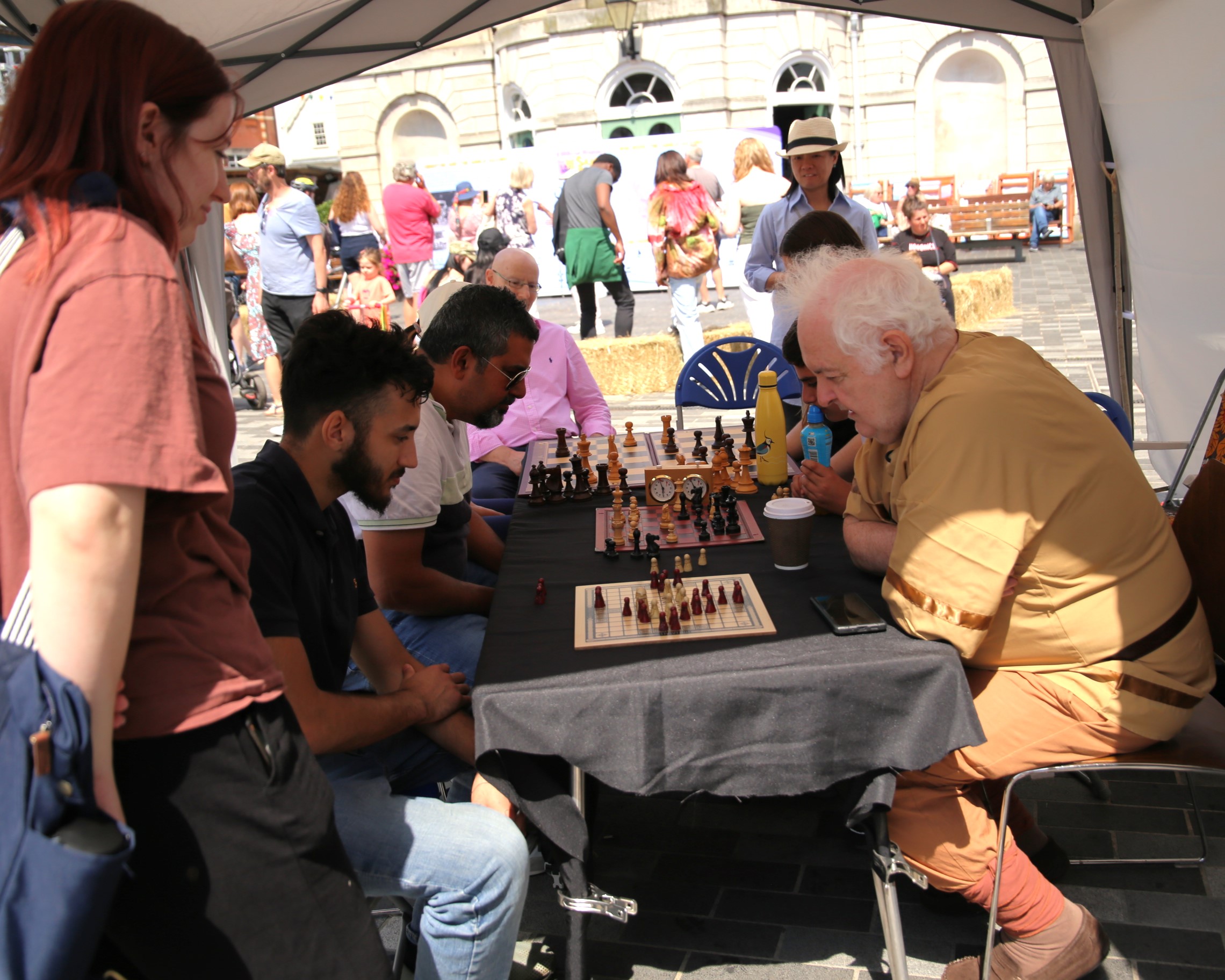Saxons
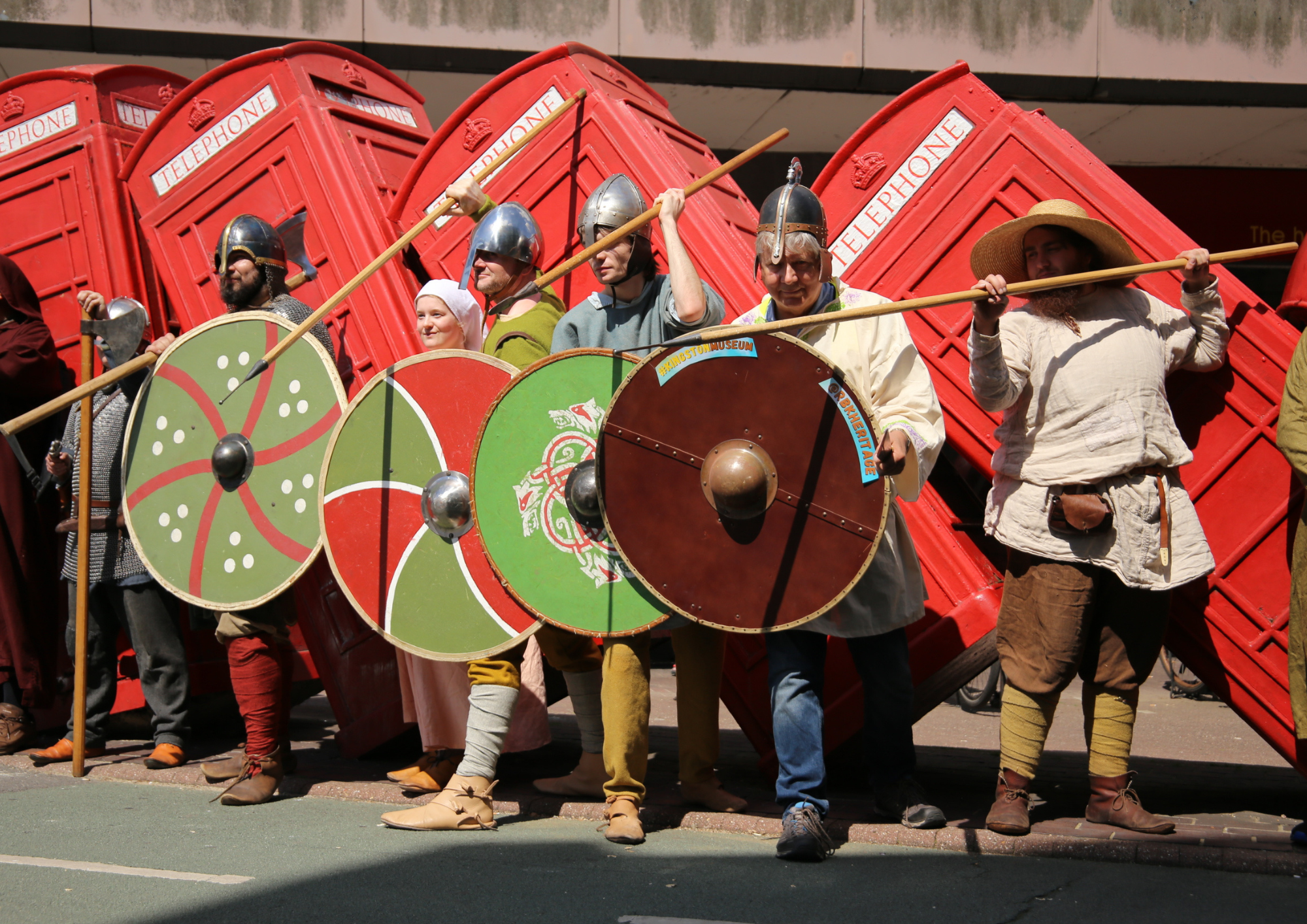
Who were the Anglo-Saxons?
The Anglo-Saxon period lasted approximately 600 years, from the late fifth century up until William I’s Norman invasion of Britain replaced the Anglo-Saxon aristocracy in the late eleventh century. The Anglo-Saxons were originally Germanic tribes - the Angles, Saxons and Jutes - who migrated to Britain following the collapse of Roman Britain in the fifth century. They all spoke a Germanic language which would ultimately become Old English. This - infused with the French influence of the succeeding Norman period - would in turn lead to the birth of Modern English. Along with the Picts and Scots, they joined the indigenous Celtic Britons in making Britain home.
Saxon settlements emerged which then grew into several smaller, competing kingdoms. It was in the ninth century that the term ‘Anglo-Saxon’ came into popular use as a way of creating a sense of shared identity and culture to unify these kingdoms during the reign of Alfred the Great. Whilst the term ‘Anglo-Saxon’ is debated in modern scholarship, it remains most commonly associated with both the German-speaking settlers who came to Britain and the early-medieval period.
Kingston and the Anglo Saxons
Kingston upon Thames played an important role in the later Anglo-Saxon period, serving as the site for royal ceremonies from the ninth century. Though Kingston is only mentioned by name in contemporary sources from the first half of the ninth century, its importance can likely be attributed to its location on the Thames and on the border of the two kingdoms of Mercia and Wessex. It is clear from the beginning of the emergence of Anglo-Saxon kingdoms in the sixth and seventh centuries that Kingston and the wider Surrey area was a ‘frontier territory’ passing between the control of Mercia and Wessex.
The name ‘Cynges tun’ - or rather ‘King’s tun’ (‘King’s estate/enclosed piece of ground’) - derives from a charter from AD 838, in which a ‘grand council’ was held at Kingston by the King of Wessex, Ecgberht. Along with his son King Æthelwulf and Archbishop Ceolnoth, this ‘grand council’ reached an agreement over the restoration of land to Christ Church, Canterbury; symbolising the process by which Kent, Surrey, Sussex and Essex were brought into the overlordship of Wessex. It is from this charter where we get the description of Kingston as ‘that famous place which is called Kingston in the region of Surrey’, indicating that Kingston was widely known and well established as a royal vill (tun) by the ninth century.
It is possible that the name ‘Cynges Tun’ may have replaced an older name: Freoricburna. If speculation is correct and Kingston was formerly Freoricburna, then by way of an eighth century charter, it can be connected to the powerful Saxon king of Mercia, Offa - significantly boosting the importance of Kingston in the earlier Saxon period.
More famously, Kingston is believed to have been the place where seven Anglo-Saxon kings of the West Saxon dynasty were coronated; these were Edward (AD 902), Æthelstan (AD 925), Edmund (AD 940), Eadred (AD 946), Eadwig (AD 950), Edgar (AD 959) and Æthelred ‘the Unready’ (AD 979). These events have long been associated with the Coronation Stone, now located outside The Guildhall, and also highlight the presence of an important church believed to have been on the site of All Saints Church.
Despite strong evidence existing for only three of these coronations, the ‘seven kings’ association with Kingston endures and has been a cause for celebrations in Kingston since at least the Victorian period.
It is especially significant that Æthelstan should have been coronated here, as his impact on the course of English history was immense: it is Æthelstan who secured Northumbria as a kingdom under his control, and thus unified all the Anglo-Saxon kingdoms to create England.
Museum Highlights
- A log boat made in about the 9th century, discovered in mud alongside the Thames in 1891. Carved from the wood of a single tree trunk, it would have taken two or three skilled boat builders around a fortnight to complete.
- A skeleton from a Saxon cemetery.
- A number of iron spearheads also found at a Saxon burial site
- Try on Saxon style clothes at our Living History Section in Kingston Museum
And be sure to say hello to our wax figure of Athelstan, clad in a replica of the purple cloak given to him by his grandfather, Alfred the Great. Depending on when you visit, Athelstan might even be wearing seasonal attire!
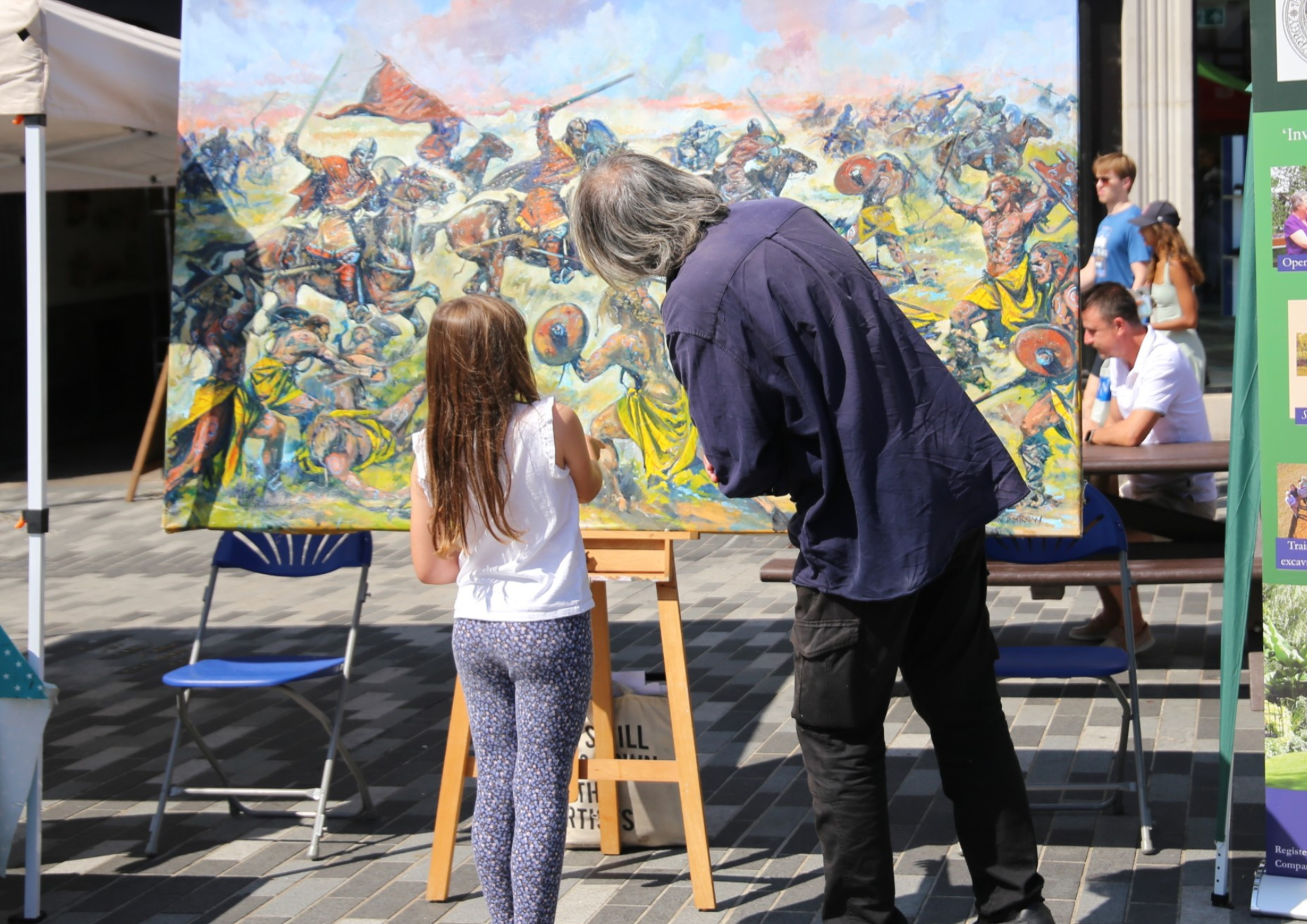
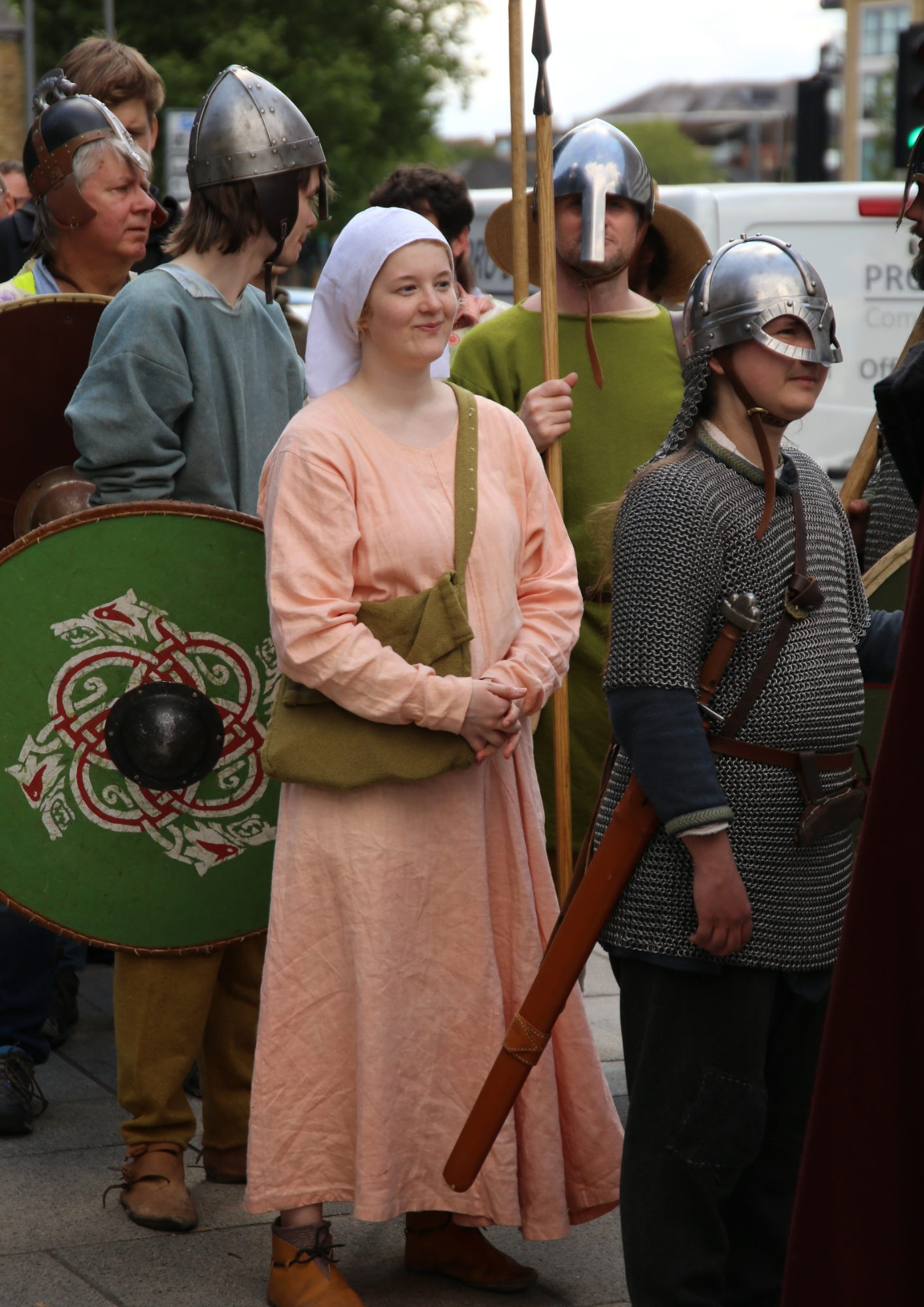
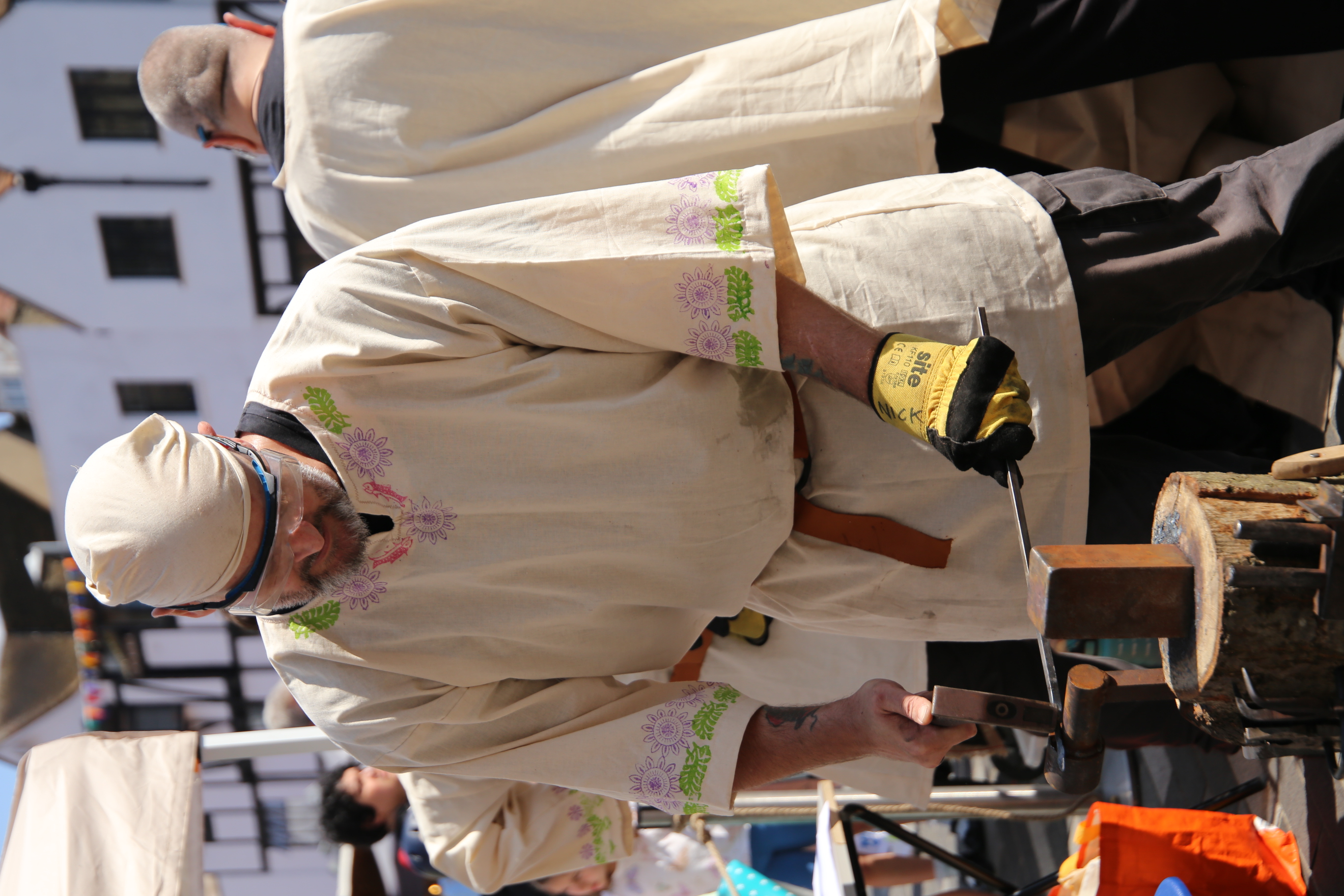
Blacksmithing
The Anglo-Saxons were famous across Europe for their skills in metalwork. Metal objects were forged by blacksmiths who shaped hot metal with blows. There were a number of ways that metalworking was carried out in the Anglo-Saxon period: ron weapons were made by ‘piling’ - a process of repeatedly heating, folding and hammering iron- and moulds were also used in the production of brooches. Later in this period, with the advent of larger urban centres (perhaps including Kingston) itinerant smiths moved from town to town working where they were needed.
Weaponry
Warfare has long been deeply associated with the Anglo-Saxon period, and not without reason: from the arrival of the Angles, Saxons and Jutes to Britain, through to the Norman Conquest, the struggle for power between the Anglo-Saxon kingdoms, and against the Viking invaders, was a major part of life at all levels of society. As such, the production of weapons was an important part of industry and trade. Common weapons included spears, axes, bows and knives. Axes were a practical tool but could also be used in warfare. These included the franciscae, a light throwing axe often found in pagan burials and the two-handed battle-axe, as depicted in the Bayeux Tapestry. Along axes, spears are the most commonly found weapons in Saxon burials and were designed to keep the enemy at distance during combat.
Swords were associated with aristocratic status, and had both a practical and ceremonial purpose. They were made by ‘pattern-welding’ techniques; from the ninth century, Anglo-Saxon smiths were aided by developing furnace technology. Although originally restricted to high-status individuals, by the Norman Conquest, the sword was a part of the standard equipment in the English army. [you can see two sixth-century Germanic swords in Kingston Museum]
Knives were also made using ‘pattern-welding’; they originated as a standard knife (seax) and became a single-edged dagger (scramasax) or a fine single-edged sword. They likely served a ceremonial as well as practical purpose. [you can see a tenth-century scramasax knife in Kingston museum]
Bows were also used in Anglo-Saxon armies, though they were not associated with the élite. Their role is less clear, with less evidence for the use of bows compared to other forms of offensive weapons, although they are mentioned in passing in the Old English epic poem The Battle of Maldon and a single English archer is shown on the Bayeux Tapestry.
Shipbuilding
Boats and ships were a vital part of Anglo-Saxon life, providing transportation, allowing for trade along waterways, and serving a military function. There were two main methods of ship construction found in London during this period: ‘shell built’ ships and ‘skeleton built’ ships. Anglo-Saxon ship remains point towards a ‘clinker’ tradition of ship design, whereby planks of wood are overlapped on a frame.
There have been a handful of clinker-built ships and boats found from the Anglo-Saxon period, including the ship burials at Sutton Hoo and Snape (Suffolk) and the Graveney boat (Kent). There is also evidence of the use of ships in the written record, with Alfred and Æthelstan in particular using naval power for defensive and offensive military purposes. Kingston has long had a tradition of shipbuilding from Turks Boats to the construction of landing crafts for the D-Day landings.
In Kingston Museum, you can see a logboat dated to between AD 870 and 1000, which likely served the purposes of ferrying passengers across the river, carrying farm produce and fishing. In Kingston, ships and boats would likely have played a major part in day-to-day life, due to the proximity to the Thames, which would have allowed for the easy movement of peoples and trade to London and beyond.
Falconry
Falconry and hawking were a favoured form of entertainment for the élite during the Anglo-Saxon period. The importance of birds of prey is demonstrated by them being used as a form of tribute, which was a process by which more powerful kings demanded offerings from less powerful kings in return for military protection. Æthelstan, for example, exacted birds of prey from Welsh kings as a form of tribute.
Beekeeping
Beekeeping was vital for the production of mead, an alcoholic beverage made by fermenting honey with water. This drink is commonly associated with the Anglo-Saxons for good reason: its importance is shown by the tradition of the ‘mead hall’, where kings would supply their subjects with mead and food, as in Beowulf. Mead was not just produced by the Anglo-Saxons, however, and is known to have been consumed all over the world, including the ancient Egyptians and also throughout the British Isles, featuring heavily in King Mynyddog Mwynfawr’s feast in Gododdin (modern day Scotland, in the region around Edinburgh) in the Middle Welsh epic poem Y Gododdin. The honey produced by bees also provided the only sweetener of the period, as sugar was not yet available in Britain.
Animal Husbandry
In early medieval Britain, livestock played a major part in day-to-day life, the economy, and even politics; in Ireland, the cattle raid was used by kings or noblemen in order to exert their power, and in Old English the words feoh, orf and ceap can be translated as both ‘wealth’ and ‘cattle’.
The obvious use for keeping animals was food production, with cows, sheep and goats providing meat and milk. Towns would have had markets where food was sold and bought, with a growing demand for food by those living in non-rural areas and by the military.
Animals could serve other useful functions in this period, however, such as horses, which were used primarily for transport, and although they were often bred to be owned by high-status individuals and used in the army, horses were used at all levels of society. Oxen and cows were responsible for pulling carts and ploughs during this period.
During the Anglo-Saxon period, animals would have looked different to how we know them today, after centuries of breeding for the purpose of domestication and providing more meat. Livestock were smaller than they are today and would have had less flesh on them, and ducks were only domesticated from the twelfth century.
Clothing and Fashion
Clothing would have been made primarily out of wool throughout this period, although more exclusive materials such as silk, satin and fur would have also been worn by those who could afford it. In the earlier Anglo-Saxon period, women would have worn a ‘peplos’, which was a tubular garment held up with one brooch at each shoulder. This clothing style was not exclusively worn by the Anglo-Saxons, but was used from the classical period and continued into the medieval period; the term ‘peplos’ itself comes from ancient Greece. Men would likely have worn ankle-length trousers under a tunic, and these would have been bound to the leg by garters or leggings.
From the middle to later Anglo-Saxon period, tunics would have been worn and these could be layered for warmth in the colder months; men’s and women’s tunics would have looked very similar, except for the fact that men’s tunics were generally shorter than women’s tunics.
Shoes would have been flat soled and made of leather or rawhide; it is likely there was little difference in the style between women’s and men’s shoes.
Exquisite craftsmanship is found in Anglo-Saxon jewellery from the beginnings of their settlement in Britain through to the arrival of the Normans in the eleventh century. Gold is commonly found in accessories belonging to wealthy and high-status individuals, such as the seventh-century gold and garnet purse-lid found at the Sutton Hoo Mound 1 ship burial. Gold could be combined with cloisonné to create intricate, colourful pieces, including the ninth-century Alfred Jewel (although its purpose is much debated; it has been suggested this object was used as a pointer rather than a fashion accessory).
Brooches were a popular accessory among the Anglo-Saxon élite. Complex silver disc brooches were particularly common, including the ninth century Strickland Brooch and Fuller Brooch and the eleventh century Æduwen Brooch. The Æduwen Brooch, found near Ely, Cambridgeshire, is a unique object for a number of reasons: it was owned by a woman (likely high-status), as evidenced by an inscription stating that ‘Ædwen owns me’, it also includes a runic inscription which might have had a magical or apotropaic purpose, and its design indicates Scandinavian influence, such as animals in the Ringerike style.
Fabric making
Textiles were used for a multitude of purposes during the Anglo-Saxon period, including clothing, tapestries, blankets and palls for caskets. They could be basic in design or complex and expensive to make, such as vestments, which could be made with gold, although these were often later taken apart for their gold, and thus few examples of such textiles survive today.
Embroidery involves stitching decorative patterns or imagery onto previously woven fabric. The Bayeux Tapestry - a wool-embroidered linen frieze depicting events leading up to the Norman Conquest of England - is an exquisite example of the craftsmanship involved in embroidery. Other Anglo-Saxon examples include the Milan Fragment (ninth-century), the Maaseik Embroidery (late-eight to early-ninth century), and the famous St Cuthbert Maniple and Stole (tenth-century).
Wool was the commonest material for clothing at all levels of society, although clothes made from silk, satin and fur would also have been used by the aristocracy.
The colours that fabrics could be dyed depended on what was available from the natural world, and the colour of one’s clothing could also indicate social status. The lower classes tended to wear more muted colours, such as cream, brown, grey; the middle classes had more choice, with richer colours such as blue, green and pink. The colours restricted to the aristocracy and royalty were cardinal red and purple; these items would have been expensive and their exclusivity emphasised the wearer’s wealth and status.
Leather making
In the earlier Anglo-Saxon period, sheep, goat, calf and deer were used to make leather, although there is little evidence for a widespread leather industry in this period. In the seventh century, a thicker type of leather began to be used that allowed for more decoration, and into the eighth until the eleventh century, Scandinavia influenced the techniques of leather making and the designs on leather making products.
Leather was used to create a multitude of different items, often with a practical purpose, including binding, sheaths of knives, shoes and scabbards.
Art
Though often referred to as the ‘Dark Ages’, the Anglo-Saxon period was filled with colour and artistic expression. From the seventh-century Sutton Hoo burials to the tenth-century Benedictional of St Æthelwold, Anglo-Saxon art and craftsmanship produced some truly extraordinary works, some of which have survived but many of which have no doubt been lost to time.
In the later Anglo-Saxon period, Wessex was the most powerful kingdom, with its centre at Winchester; from here the ‘Winchester School’ of art emerged under the patronage of bishop Æthelwold. Perhaps the most exquisite surviving example of this is a tenth-century embroidered stole commissioned by Æthelstan presented to the Shrine of St Cuthbert, Chester-le-Street, which draws on Carolingian and Byzantine models. Later, from the end of the tenth century new innovations in technique emerged, including the use of different coloured inks and the use of coloured infilling for outline drawings in brown ink.
Throughout the Anglo-Saxon period, art, sculpture and objects were inspired by many different traditions, including Carolgingian, Scandinavian and Irish traditions. For example, the Colerne sculpture in Wiltshire is decorated with interlocked lions with spiral shoulders in a style that recalls Pictish stone sculpture and the Lindisfarne Gospels show a clear artistic connection to Irish manuscripts.
Stain glass
At the sites of the Northumbrian Anglo-Saxon monasteries Monkwearmouth and Jarrow, seventh-century fragments of coloured window glass have been discovered. Beyond this, however, there is not substantial surviving evidence for the use of stained glass in Anglo-Saxon England, although it is conceivable that it was a tradition that simply doesn’t appear in the archaeological record on the basis of the fragility of glass.
In the Anglo-Saxon world, ecclesiastical communities held great power and wealth, and it was at these sites where the production of stained glass likely thrived. It is a great misconception that the Anglo-Saxon period was dark and dreary, and ignorant of learning; in reality, both their learning and crafts were sophisticated and far from boring, and it is in ecclesiastical communities that they would have been cultivated the most.
Pottery
Britain had a long history of importing and making pottery before the Adventus Saxonum - the arrival of the Anglo-Saxons in Britain. Pottery dating to the earlier Anglo-Saxon period followed pottery trends in mainland Europe, yet there is evidence of the existence of specialised pottery workshops dating back to at least the sixth century. From the seventh century, pottery was produced using increasingly sophisticated kilns, leading to harder pottery that often imitated Frankish examples. As with metalworking, in the later Anglo-Saxon period pottery became more widespread and focused in urban settlements, particularly in Stamford, Norwich, Ipswich and, Stafford, Torksey and Lincoln, although London seems to have imported much of its pottery rather than being a centre for production. It is therefore conceivable that Kingston produced pottery, but there is also a high chance that it imported much of its pottery, especially given the trade route provided by the Thames.
Researcher - Eliza Cane-Honeysett
Photography - Katie Fells
